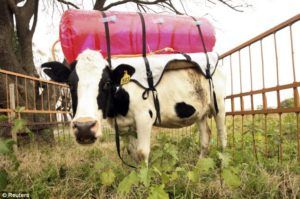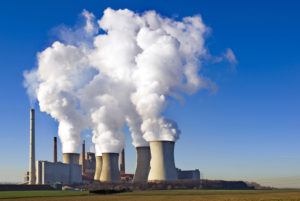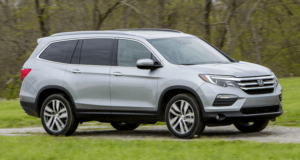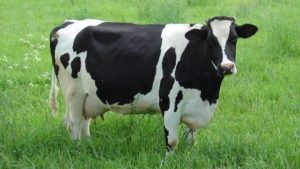Are Cows the New SUV?

A landmark 2009 study by leading environmentalists proclaims that “The single largest contributor to greenhouse gas emissions globally is livestock. It’s not automobiles, it’s not power plants, it’s livestock.”[1] What is the meat manufacturing industry doing to tackle this issue?
Are you willing to pay 330 thousand dollars for a juicy burger? A little steep? Then perhaps 18 thousand dollars for a meatball? That’s what you’d have to dish for a piece of lab “grown” meat. There are cheaper options out there, for 6 dollars one can find veggie burgers produced by Beyond Meat. Will we be the first and last generation that eats meat every day, as one industry leader proclaims?[2]
The trend towards meat substitutes is in large part due to the growing awareness of the environmental repercussions of the $85 billion US meat industry.[3] A recent Oxford study projects that by 2050, food-related greenhouse gas emissions could account for half of the emissions the world can afford if global warming is to be limited to less than 2°C. Adopting global dietary guidelines would cut food-related emissions by 29%, vegetarian diets by 63%.[4]
These are trends that may be hard for the meat industry to ignore. Perhaps the day that governments begin restricting emissions from cows in a similar manner to restrictions on automobiles is not far off. The US Government has announced a plan to reduce methane output from cattle by 25% by 2020.[5] Consumer awareness is another factor to consider. Today’s consumers are willing to pay more for sustainable products and increasingly, people define themselves as flexitarians, actively cutting down meat consumption. Department of Agriculture data show that since 2002, beef consumption in the U.S. has fallen 11%. The alternative meat industry is outpacing the food industry as a whole in terms of annual growth,[6] as 70% of American meat eaters said to have used meat substitute at least once a week. Across the Atlantic, the German meat-substitute market is expected to grow 12% annually in the next 5 years, a pace far exceeding that of the meat industry.[7]
It appears that it may be in the best interest of meat manufacturers to rethink some of their operations. Tyson Foods is the largest meat processor in the United States[8] and Rugenwalder Muhle one of the largest in Germany. What are these two companies doing to tackle this issue and are they doing enough?
One option is transferring to diets that increasingly rely on meat substitutes. Beyond Meat is a startup that aims to recreate meat using plants, they currently sell in over 11,000 stores in the US. Bill Gates, invested in the company after tasting a “chicken” taco with their product, “I couldn’t tell the difference. What I was experiencing was more than a clever meat substitute. It was a taste of the future of food.”[9] Gates isn’t the only investor. In 2016, Tyson Foods became a part-owner of Beyond Meat. In Germany, Rugenwalder Muhle are taking an even stronger stance and have set a target of having at least 30% of sales come from its new meat substitute range by 2019.[10]
For people more skeptic about meat alternatives the solution may lie in minimizing the emissions currently produced by cows. Research conducted over the last two decades has proven that selective breeding could cut emissions by as much as 25%.[11] The genetic options is slow but results would be permanent. A shorter term solution may be the cows’ diet. Experiments with diets have led to reductions in methane emissions of up to 70%.[12] Results are still inconsistent and the sweet-spot of reduction, economic feasibility and cow health concerns is yet to be found. Finally, scientists in Argentina have prototyped what some, quite simply, refer to as “fart-packs”. These devices attached to a cow capture enough emissions over a day to run a car for 24 hours.

An additional solution could be found in the 100 pounds of manure a cow produces per day, which account for 10% of methane emissions in the US.[13] Methane digesters, capture methane from the air and use it to generate electricity. As of 2015, less than 240 such digesters were operated in US farms, of which there are approximately 2 million.[14] These digesters produced enough electricity to power 70,000 homes.
Advancing sustainability in the meat industry appears to be a case where the interests of the manufacturers and environmentalists converge. However, the global industry leaders are not playing a big part in researching and implementing solutions. Sooner or later the industry could find itself under fire and with the stakes so high, it may be time for its leaders to take an active stance in exploring and advancing possible solutions.
(771 words)
____________________________________________________________________________________________________
[1] Robert Goodland and jeff Anhang, “Livestock and Climate Change”, World Watch, November-December 2009, http://www.worldwatch.org/files/pdf/Livestock%20and%20Climate%20Change.pdf, accessed November 2016
[2] Niam Michail, “Meat-free Alternatives – brought to you by the meat companies”, Food Navigator, October 8th 2015, http://www.foodnavigator.com/Market-Trends/Meat-free-alternatives-brought-to-you-by-the-meat-companies, accessed November 2016.
[3] Cori Capik, “Meatmap: A look at the Global Meat market”, Agfunder News, January 17th 2014, https://agfundernews.com/meatmap-a-look-at-the-global-meat-market.html, accessed November 2016.
[4] “Plant Based diets could save millions of lives and dramatically cut greenhouse gas emissions”, Oxford martin School News, March 21st 2016, http://www.oxfordmartin.ox.ac.uk/news/201603_Plant_based_diets, accessed November 2016.
[5] Laura Beil, “Getting Creative to Cut Methane from Cows”, Science News, November 18th 2015, https://www.sciencenews.org/article/getting-creative-cut-methane-cows, accessed November 2016.
[6] Stephanie Storm, “Tyson Foods, a Meat Leader, Invests in Protein Alternatives”, New York Times, October 10th 2016, http://www.nytimes.com/2016/10/11/business/tyson-foods-a-meat-leader-invests-in-protein-alternatives.html?_r=0, accessed November 2016.
[7] Niam Michail, “Meat-free Alternatives – brought to you by the meat companies”, Food Navigator, October 8th 2015, http://www.foodnavigator.com/Market-Trends/Meat-free-alternatives-brought-to-you-by-the-meat-companies, accessed November 2016.
[8] Stephanie Storm, “Tyson Foods, a Meat Leader, Invests in Protein Alternatives”, New York Times, October 10th 2016, http://www.nytimes.com/2016/10/11/business/tyson-foods-a-meat-leader-invests-in-protein-alternatives.html?_r=0, accessed November 2016.
[9] Medaline Stone, “How a startup that makes fake meat from plants caught the attention of Bill Gates and the founders of Twitter”, Business Insider, August 15th 2015, http://www.businessinsider.com/how-a-startup-that-makes-fake-meat-from-plants-caught-the-attention-of-bill-gates-and-the-founders-of-twitter-2015-7, accessed November 2016.
[10] Niam Michail, “The Meat Companies Making Vegetarian Food: Mainstreaming Sustainable Eating or Dangerous Double Standards?”, Food Navigator, July 13th 2016, http://www.foodnavigator.com/Market-Trends/The-meat-companies-making-vegetarian-food-Mainstreaming-sustainable-eating-or-dangerous-double-standards, accessed November 2016.
[11] Laura Beil, “Getting Creative to Cut Methane from Cows”, Science News, November 18th 2015, https://www.sciencenews.org/article/getting-creative-cut-methane-cows, accessed November 2016.
[12] ibid
[13] ibid
[14] ibid






Hi Ameg,
Thank you for your excellent post and for bringing up such an important topic!
Reducing or finding alternatives to our meat consumption is probably one of the most effective actions we can take in our everyday life not only to fight climate change, but also to ensure that humans follow a sustainable development in the years to come.
Meat is an extremely inefficient source of calories: it accounts for 17% of global calorific intake, but uses twice that amount of land, water and [1]. As consumption in emerging countries increases, driven by changing eating patterns and raising disposable income, the environmental cost of this industry will become even more evident.
A second point is the health hazard represented by such a huge animal population: given the overcrowded and unhealthy conditions in which animals are held, diseases can quickly develop and spread to humans. Numerous events over the last few years, such as the mad cow and the avian flu, are clear examples of how dangerous this aspect can be.
Finally, the ethical aspect should not be underestimated: do we really want to live in a society that mechanically slaughters millions of animals on a daily basis, when we would have the technology and the means to change our eating habits?
Let us hope that clean meat reaches our tables fast!
[1] http://www.economist.com/blogs/feastandfamine/2013/12/livestock
This is an interesting topic, Ameg, and Roberto, I appreciate your humanitarian/ethically-focused response.
There is a question here that I’m not sure we have addressed: more and more people are now health-conscious and do not want to eat processed foods, the trend is to go organic. Meat substitutes is a great idea, but they are, by definition, processed foods. How do we solve both the consumer demand for healthy, natural options and the need to reduce carbon emissions from our primary food sources?
I believe the answer probably lies in changing cows’ diets and using methane digesters, as suggested above, because these are harm-free ways to counter environmental contributions while providing the healthy food products consumers demand.
Thanks for the thoughtful post, Ameg. I completely agree that shifting consumer behavior could catalyze more sustainable practices within the meat industry. However, for this to happen on a meaningful scale, it’s crucial for the US Government to take a leadership role. Specifically, the government needs to review its subsidization of animal feed crops and its aversion from publicly supporting a consumer reduction in consumption of red meat.
From 1995 to 2010, the US Government subsidized the production of US commodity crops (e.g., corn, wheat, rice) by $200 billion, and a sizable percentage of these crops went directly to animal feed. Conversely, growers are fruits, vegetables, and tree nuts, receive no direct subsidies. Further, commodity growers who grow fruits and vegetables on the same lands as commodity crops automatically disqualify for direct subsidy payments, restricting availability of land for fresh produce.[1]
By reducing subsidies for commodity crops earmarked for animal feed and increasing subsidies for alternative sources of nutrients and protein (e.g., legumes, tree nuts, fruits, and vegetables), the prices of meat and other alternatives would more accurately reflect the true cost of production. Research has shown that consumers are responsive to price changes of fresh fruits and vegetables, as well as beef and pork [3], suggesting that shifting subsidies away from beef and toward fruits, vegetables, and legumes could help shift consumer purchasing behavior.
Second, there’s a complete lack of government advocacy for consumer reduction in meat consumption. Research has shown that people across countries generally believe that it’s the role of the government to lead efforts to educate consumers about the link between meat consumption and climate change. Hence, when governments don’t become a voice in this conversation, it signals to the public that it’s not that big of an issue. [2] Recent dietary guidelines from the USDA in January 2016 highlight the administration’s aversion from taking a stance on red meat and sustainability: A Dietary Guidelines advisory panel made recommendations to the USDA to include sustainability as a criterium for consumers making food choices, which officials rejected. The advisory panel also pushed for a guideline that would reduce consumer intake of red meat. Yet, after the meat industry pushed back, the final guidelines included nothing on the subject.[4]
So, while private company investment in offering a broader range of meat substitutes to consumers is one part of the puzzle, it’s equally important to push the government to take a leadership role and change its positioning in ways that would encourage less red meat consumption.
[1] https://www.washingtonpost.com/national/health-science/us-touts-fruit-and-vegetables-while-subsidizing-animals-that-become-meat/2011/08/22/gIQATFG5IL_story.html
[2] https://www.chathamhouse.org/publication/changing-climate-changing-diets
[3] http://www.ers.usda.gov/webdocs/publications/aib750/5848_aib750q_1_.pdf
[4] http://www.npr.org/sections/thesalt/2016/01/07/462160303/new-dietary-guidelines-crack-down-on-sugar-but-red-meat-gets-a-pass
Ameg – great post. I would never have guessed that livestock could have been the largest contributor to greenhouse gas emissions. Having read Elise’s comment, I also believe that there is a trend in consumption towards more organic foods. While more expensive, people tend to be cautious of what they eat, and may therefore stay away from processed foods. I would therefore argue that minimizing the emissions produced by cows would be the way to go. However, I see two issues here, 1) having to educate industry leaders of the potential benefits of selective breeding and 2) convincing them that the benefits outweigh the costs.
Ameg, I want to build on a couple of posts made earlier. I think there is a significant movement towards eating organically, being more environmentally friendly, and generally being healthier. Studies have shown that excessive red meat consumption is bad for your heart. It’s even right on WebMD [1]. I was wondering if alternatives such as growing red meat in a lab is the appropriate direction to take? Should the focus rather be on removing red meat from our diet entirely? If the push toward these “meat substitutes” is a result of people becoming aware of the environmental impact of raising animals, why would the goal not be to end meat consumption entirely rather than build a new industry that may or may not prove to be viable?
http://www.webmd.com/food-recipes/features/the-truth-about-red-meat#1